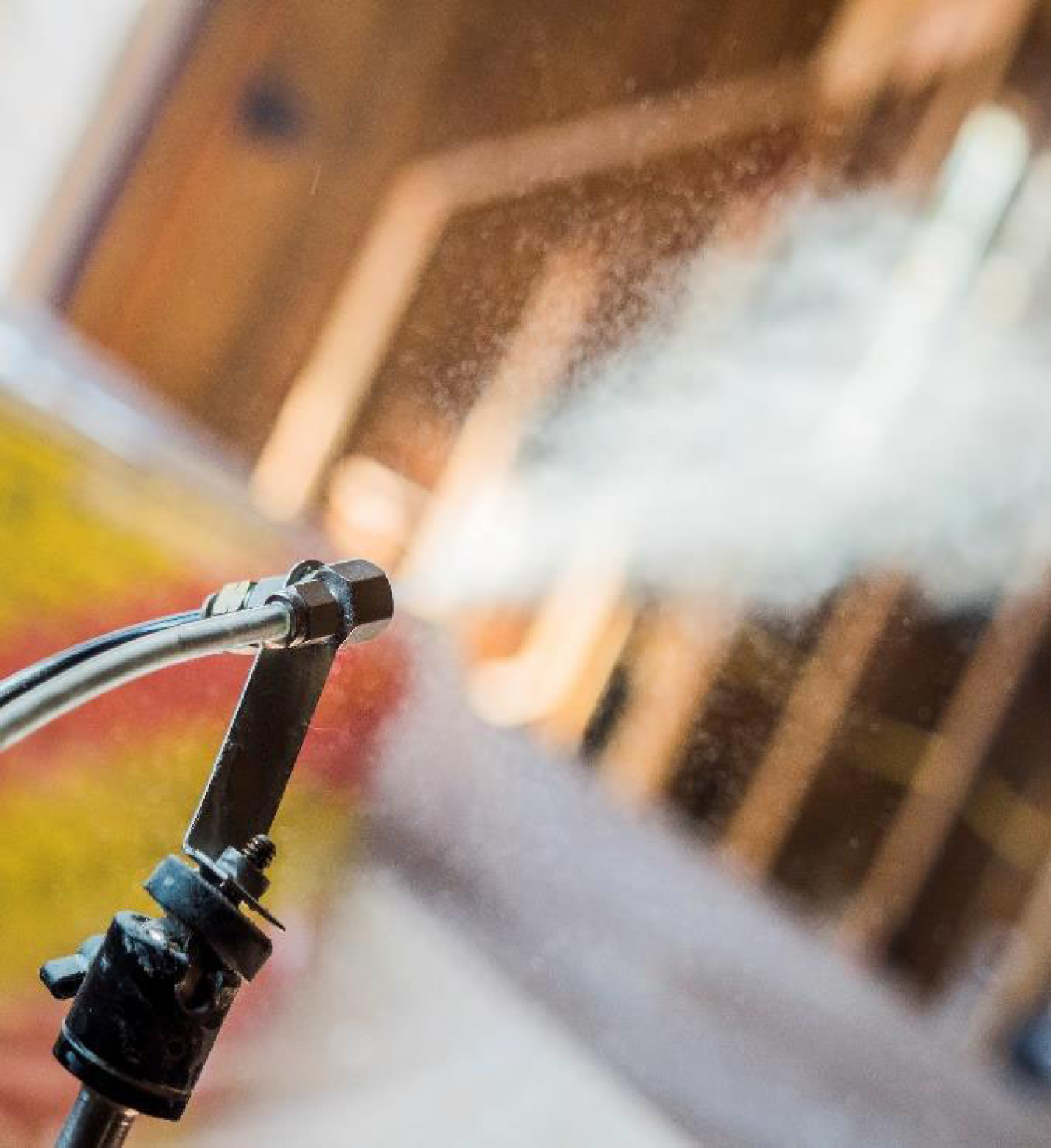
Aerosol envelope-sealing technology developed by the Western Cooling Efficiency Center at the University of California, Davis, uses an automated envelope-sealing method to precisely meet air leakage targets. The process involves pressurizing the building for an hour or two while applying an aerosol sealant “fog” to the building interior. As air escapes through leaks in the envelope, sealant particles are carried to the leaks where they impact, stick, and accumulate to seal them. A standard blower door is used to facilitate the sealing process and provide real-time feedback and a permanent record of the sealing. The technology is thus capable of simultaneously measuring, locating, and sealing leaks in a building.
In this project, researchers sought to optimize the integration of this technology into the construction process by identifying the most appropriate stage to perform the air sealing (e.g., before or after drywall). Several sealing approaches were evaluated with multiple builders to establish procedures that builders can use to easily integrate the aerosol sealing technique into standard construction practices and reduce the cost of less-effective conventional sealing. The goal is to produce more consistent sealing performance and improved airtightness in a cost-effective manner.
Read more about this success story on the project web page.
